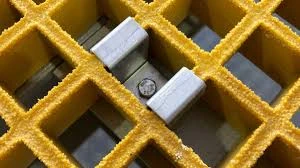
-
 Afrikaans
Afrikaans -
 Albanian
Albanian -
 Amharic
Amharic -
 Arabic
Arabic -
 Armenian
Armenian -
 Azerbaijani
Azerbaijani -
 Basque
Basque -
 Belarusian
Belarusian -
 Bengali
Bengali -
 Bosnian
Bosnian -
 Bulgarian
Bulgarian -
 Catalan
Catalan -
 Cebuano
Cebuano -
 China
China -
 China (Taiwan)
China (Taiwan) -
 Corsican
Corsican -
 Croatian
Croatian -
 Czech
Czech -
 Danish
Danish -
 Dutch
Dutch -
 English
English -
 Esperanto
Esperanto -
 Estonian
Estonian -
 Finnish
Finnish -
 French
French -
 Frisian
Frisian -
 Galician
Galician -
 Georgian
Georgian -
 German
German -
 Greek
Greek -
 Gujarati
Gujarati -
 Haitian Creole
Haitian Creole -
 hausa
hausa -
 hawaiian
hawaiian -
 Hebrew
Hebrew -
 Hindi
Hindi -
 Miao
Miao -
 Hungarian
Hungarian -
 Icelandic
Icelandic -
 igbo
igbo -
 Indonesian
Indonesian -
 irish
irish -
 Italian
Italian -
 Japanese
Japanese -
 Javanese
Javanese -
 Kannada
Kannada -
 kazakh
kazakh -
 Khmer
Khmer -
 Rwandese
Rwandese -
 Korean
Korean -
 Kurdish
Kurdish -
 Kyrgyz
Kyrgyz -
 Lao
Lao -
 Latin
Latin -
 Latvian
Latvian -
 Lithuanian
Lithuanian -
 Luxembourgish
Luxembourgish -
 Macedonian
Macedonian -
 Malgashi
Malgashi -
 Malay
Malay -
 Malayalam
Malayalam -
 Maltese
Maltese -
 Maori
Maori -
 Marathi
Marathi -
 Mongolian
Mongolian -
 Myanmar
Myanmar -
 Nepali
Nepali -
 Norwegian
Norwegian -
 Norwegian
Norwegian -
 Occitan
Occitan -
 Pashto
Pashto -
 Persian
Persian -
 Polish
Polish -
 Portuguese
Portuguese -
 Punjabi
Punjabi -
 Romanian
Romanian -
 Russian
Russian -
 Samoan
Samoan -
 Scottish Gaelic
Scottish Gaelic -
 Serbian
Serbian -
 Sesotho
Sesotho -
 Shona
Shona -
 Sindhi
Sindhi -
 Sinhala
Sinhala -
 Slovak
Slovak -
 Slovenian
Slovenian -
 Somali
Somali -
 Spanish
Spanish -
 Sundanese
Sundanese -
 Swahili
Swahili -
 Swedish
Swedish -
 Tagalog
Tagalog -
 Tajik
Tajik -
 Tamil
Tamil -
 Tatar
Tatar -
 Telugu
Telugu -
 Thai
Thai -
 Turkish
Turkish -
 Turkmen
Turkmen -
 Ukrainian
Ukrainian -
 Urdu
Urdu -
 Uighur
Uighur -
 Uzbek
Uzbek -
 Vietnamese
Vietnamese -
 Welsh
Welsh -
 Bantu
Bantu -
 Yiddish
Yiddish -
 Yoruba
Yoruba -
 Zulu
Zulu
Innovative Uses of Fiberglass Shells in Modern Design and Construction Techniques
The Versatile World of Fiberglass Shells
In the realm of modern manufacturing and design, fiberglass has emerged as a game-changer, particularly in the creation of fiberglass shells. These lightweight, durable structures have found applications across various industries, from automotive to marine, and even in architecture. The importance of fiberglass shells lies not only in their functionality but also in their aesthetic appeal and versatility.
Fiberglass, or glass-reinforced plastic (GRP), is made from a polymer matrix reinforced with glass fibers. This combination results in a material that boasts an impressive strength-to-weight ratio, making it ideal for applications where reducing weight is crucial while maintaining structural integrity. One of the most prominent uses of fiberglass shells is in the automotive industry. Many sports cars utilize fiberglass bodies to enhance speed and efficiency. The reduced weight of these bodies allows for better fuel economy and improved acceleration, setting them apart in a competitive market.
In the marine sector, fiberglass has revolutionized boat manufacturing. The traditional use of wood and metal in boat building has given way to fiberglass, which offers superior resistance to corrosion and fatigue. Fiberglass shells can withstand harsh marine environments without succumbing to the elements, making them a preferred choice for both recreational boats and commercial vessels. The aesthetic possibilities with fiberglass are also significant. Manufacturers can mold fiberglass into various shapes and designs, allowing for the creation of sleek, aerodynamic, and visually appealing surfaces that are not only functional but also beautiful.
Beyond transportation, fiberglass shells have found a niche in architecture and construction. From roofing systems to decorative elements in commercial buildings, fiberglass provides a lightweight yet strong option for designers looking to push the boundaries of modern building aesthetics. Transparent or translucent fiberglass shells can also be utilized to maximize natural light in buildings while maintaining privacy and reducing heating costs. The flexibility in design allows for the creation of unique architectural features that stand out in urban environments.
fiberglass shell

Environmental considerations have also propelled the popularity of fiberglass. As the world moves towards more sustainable practices, fiberglass shells offer an option that can be recyclable and environmentally friendly. Innovations in the resin formulations used in fiberglass production are making strides towards reducing the carbon footprint associated with this material. Furthermore, the longevity of fiberglass products means less frequent replacements, which aligns well with sustainability goals in various industries.
The manufacturing process of fiberglass shells involves several techniques, including hand lay-up, spray-up, and vacuum infusion. Each method offers different advantages depending on the complexity and requirements of the final product. Hand lay-up, for example, allows for large components to be made with high detail, while vacuum infusion can produce lighter and more structurally sound parts, making it ideal for high-performance applications.
However, the fiberglass industry does face challenges. The production process can release volatile organic compounds (VOCs), which pose health risks if not managed properly. Moreover, the disposal of fiberglass products has raised concerns due to the material's durability; although it is recyclable, the infrastructure for fiberglass recycling is still developing. Addressing these challenges will be crucial for the future sustainability of fiberglass shells.
In conclusion, fiberglass shells represent a fusion of functionality and aesthetics, offering solutions across various sectors while addressing contemporary needs for sustainability and design innovation. Their lightweight yet durable characteristics have made them an integral part of modern manufacturing, shaping the future of industries ranging from automotive to architecture. As technology advances and new methods of production and recycling are established, the potential for fiberglass shells will continue to expand, paving the way for exciting developments and applications in the years to come.









